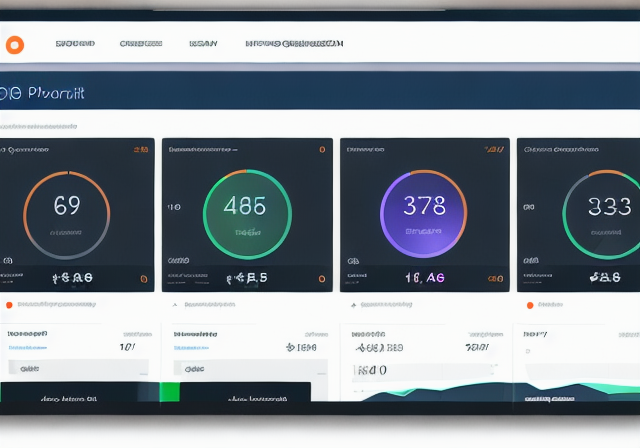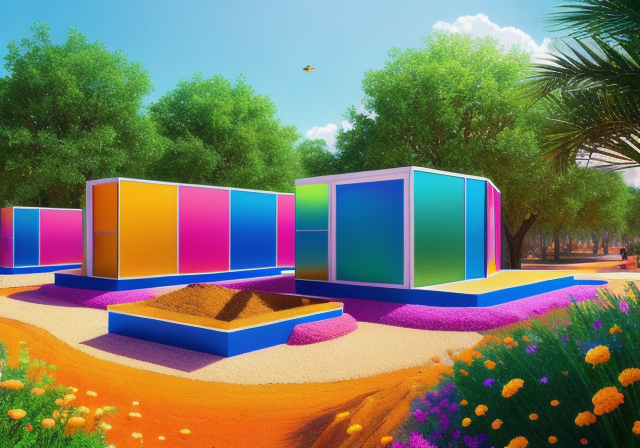What is a define microsite?
A define microsite is a small, standalone website that is designed to promote a specific product, service, or event. It is typically created as a part of a larger website and is used to provide more detailed information about a particular topic or offer. Unlike a traditional website, a microsite is focused on a single objective and is designed to be highly targeted.
Examples of successful define microsites:
One example of a successful microsite is the “Share a Coke” campaign by Coca-Cola. The microsite was designed to promote the company’s personalized bottle campaign and allowed users to create custom bottles with their names on them. The site was highly engaging and generated a massive amount of social media buzz, leading to increased sales and brand awareness.
Another example is the “My Starbucks Rewards” microsite, which was created to promote the company’s loyalty program. The site provided users with information about the program, as well as exclusive offers and rewards. The microsite was highly effective in driving sign-ups for the program and increasing customer engagement.
The benefits of using a define microsite:
- Increased engagement: A microsite can be highly engaging and interactive, leading to increased time spent on the site and a higher likelihood of conversion.
- Greater targeting: A microsite allows you to focus on a specific audience or offer, making it easier to create targeted messaging and calls-to-action.
- Improved SEO: A microsite can be optimized for specific keywords and phrases, helping to improve your overall search engine ranking.
- Measurable results: A microsite can be easily tracked and analyzed, allowing you to measure the success of your campaign and make data-driven decisions.
Overall, a define microsite can be a powerful tool in your marketing arsenal, helping you to create targeted messaging, improve SEO, and drive engagement and conversions. By creating a microsite that is focused on a specific objective, you can increase your chances of success and achieve your marketing goals more effectively.

Planning Your Define Microsite
Now that you have a clear understanding of what a define microsite is, it’s time to plan your own. A successful microsite is one that is well-designed, has a clear purpose, and is targeted to the right audience. Here are some tips on how to plan your microsite:
Identify Your Goals and Target Audience
The first step in planning your microsite is to identify your goals and target audience. What do you want to achieve with your microsite? Are you looking to generate leads, promote a new product, or build brand awareness? Once you have identified your goals, you need to identify your target audience. Who are you trying to reach with your microsite? What are their interests and pain points? Understanding your target audience will help you create content that resonates with them.
Choose the Right Domain Name and Hosting
Choosing the right domain name and hosting is crucial to the success of your microsite. Your domain name should be easy to remember and relevant to your brand. It should also be SEO-friendly, meaning it includes relevant keywords. When it comes to hosting, it’s important to choose a reliable hosting provider that offers fast loading times and excellent customer support.
Create a Content Plan and Site Map
Once you have identified your goals, target audience, domain name, and hosting, it’s time to create a content plan and site map. Your content plan should outline the types of content you will create for your microsite, including blog posts, videos, and infographics. Your site map should outline the structure of your microsite, including the main pages and subpages. This will help you ensure that your microsite is organized and easy to navigate.
Design Your Microsite
Finally, it’s time to design your microsite. Your microsite should be visually appealing, with a design that is consistent with your brand. It should also be easy to navigate, with a clear call to action on each page. When designing your microsite, it’s important to keep your target audience in mind. Make sure that your design resonates with them and is easy to use.
By following these tips, you can plan and design a successful define microsite that achieves your goals and resonates with your target audience.

Remember, a well-planned and well-designed microsite can be a powerful tool for generating leads, building brand awareness, and promoting your products or services. Take the time to plan and design your microsite carefully, and you’ll be well on your way to achieving your goals.
Building Your Define Microsite
Now that you have planned your define microsite, it’s time to build it. Building a microsite can be a challenging task, but with the right tools and techniques, you can create a stunning and engaging site that will capture your audience’s attention. Here are some important steps to follow:
Choosing a CMS and Platform
The first step in building a microsite is choosing the right CMS and platform. A CMS or Content Management System is a software application that allows you to create, manage, and publish digital content, while a platform is an underlying technology that supports your CMS. There are many CMS and platforms available, each with its own unique features and benefits.
When choosing a CMS and platform, consider your budget, technical expertise, and the features you need. Some popular options include WordPress, Drupal, and Joomla. WordPress is the most popular CMS, with over 40% of all websites using it. It’s user-friendly and has a wide range of plugins and themes available. Drupal is a more complex CMS that’s best suited for larger sites with advanced functionality, while Joomla is a good option for smaller sites with less complex needs.
Selecting and Customizing a Theme
Once you have chosen your CMS and platform, the next step is selecting and customizing a theme. A theme is a pre-designed template that determines the look and feel of your site. It’s important to choose a theme that’s visually appealing and easy to navigate. Most themes come with customization options that allow you to change colors, fonts, and layouts to fit your brand and style.
When selecting a theme, consider your target audience and the message you want to convey. If you’re building a site for a business, choose a theme that’s professional and reflects your brand identity. If you’re building a site for a creative project, choose a theme that’s visually striking and showcases your work.
Adding Content and Functionality
Once you have chosen and customized your theme, it’s time to add content and functionality. Content is the heart of your site, and it’s important to create high-quality, engaging content that resonates with your audience. Functionality refers to the features and tools that your site offers, such as contact forms, social media integration, and e-commerce capabilities.
When adding content and functionality, consider your site’s goals and your audience’s needs. Keep your content fresh and up-to-date, and make sure your site is easy to navigate. Use plugins and tools to add functionality and make your site more engaging.
Optimizing Your Site for Search Engines
Finally, it’s important to optimize your site for search engines. Search engine optimization or SEO is the process of improving your site’s visibility in search engine results pages. By optimizing your site for SEO, you can attract more traffic and improve your site’s ranking.
When optimizing your site for SEO, consider your target keywords and use them strategically throughout your content. Use meta descriptions and title tags to provide search engines with information about your site. Use alt tags for images and include internal and external links to improve your site’s authority.
Building a define microsite takes time and effort, but by following these steps, you can create a site that’s engaging, visually appealing, and optimized for search engines. With the right tools and techniques, you can build a microsite that captures your audience’s attention and drives results.


“Good content is not storytelling. It’s telling your story well.” – Ann Handley
Promoting your Define Microsite
Now that you have your microsite up and running, it’s time to start promoting it. Creating a comprehensive marketing plan is key to driving traffic to your site. Start by identifying your target audience and understanding where they spend their time online. This will help you determine the best channels to use for promotion.
Leveraging social media and email marketing
Social media is a powerful tool for promoting your microsite. Identify which platforms your target audience is most active on and create a presence there. Share your content regularly and engage with your followers to build a community around your brand. Use eye-catching visuals and strong calls to action to encourage clicks and shares.
Email marketing is another effective way to promote your microsite. Build an email list of interested prospects and send regular newsletters highlighting your latest content and promotions. Personalize your emails to make them more engaging and increase click-through rates.
Using paid advertising to drive traffic
Paid advertising can be a great way to drive targeted traffic to your microsite. Consider using platforms like Google Ads or Facebook Ads to reach your target audience. Use compelling ad copy and eye-catching visuals to stand out from the competition. Set a budget and track your results carefully to ensure you’re getting a return on investment.
Tracking and analyzing your results
Tracking and analyzing your results is essential to understanding the effectiveness of your marketing efforts. Use tools like Google Analytics to track traffic to your site and identify which channels are driving the most traffic. Use this information to refine your marketing strategy and focus your efforts on the most effective channels.
In conclusion, promoting your microsite requires a multi-faceted approach that leverages a variety of channels. By creating a comprehensive marketing plan, leveraging social media and email marketing, using paid advertising, and tracking your results, you can effectively drive traffic to your site and achieve your business goals.
Maintaining and Updating Your Define Microsite
Creating a comprehensive marketing plan and promoting your microsite is only half the battle. Once your site is up and running, it’s essential to maintain it properly to keep it relevant and engaging. Regular maintenance ensures your site is functioning correctly and keeps your visitors interested in what you have to offer. Here are some best practices for maintaining your microsite:
Regular Content Updates
Keeping your content fresh and relevant is crucial to keeping your visitors coming back. Regularly update your content with new information, blog posts, or fresh images to keep your site interesting. Consider adding a blog section to your site that allows you to share news, updates, or insights about your products or services. This not only keeps your site fresh but also helps to establish your brand as an authority in your industry.
Design Updates
Design trends change frequently, and it’s essential to keep your site up-to-date with the latest styles. Consider updating your site’s design periodically to keep it looking fresh and modern. However, be careful not to make drastic changes that may confuse or alienate your regular visitors. Instead, make small tweaks that improve the overall user experience and align with your brand’s identity.
Security Updates
Keeping your site secure is essential to protecting both your business and your visitors. Regularly update your site’s security features, such as SSL certificates, firewalls, and anti-virus software. These updates not only protect your site from cyber-attacks but also improve your site’s search engine rankings. Google prioritizes secure sites in its search results, so keeping your site secure is crucial to maintaining your online visibility.
Regular maintenance is essential to ensuring your microsite remains relevant, engaging, and secure. By following these best practices for maintaining your site, you can keep your visitors coming back and establish your brand’s authority in your industry.









